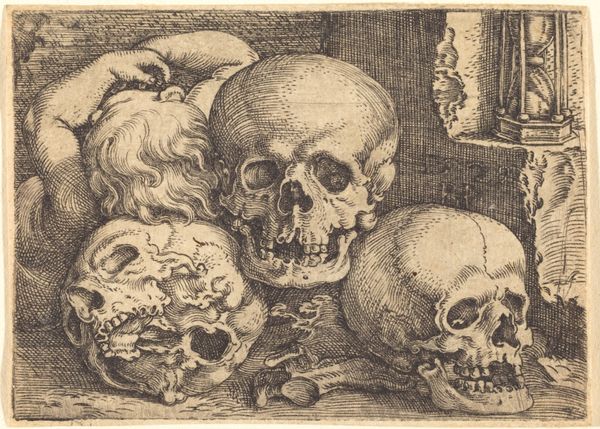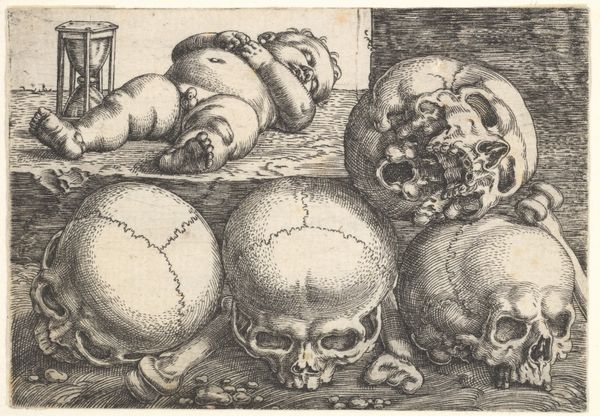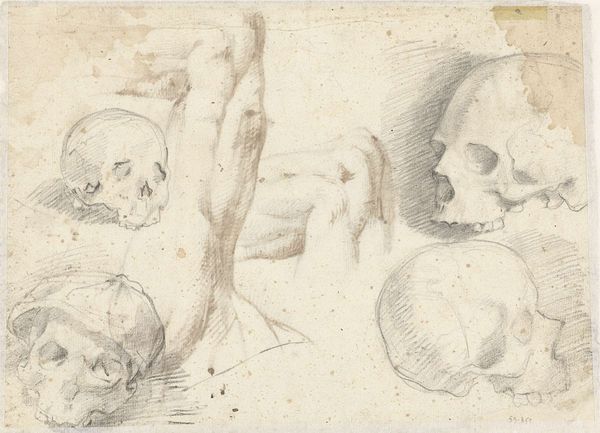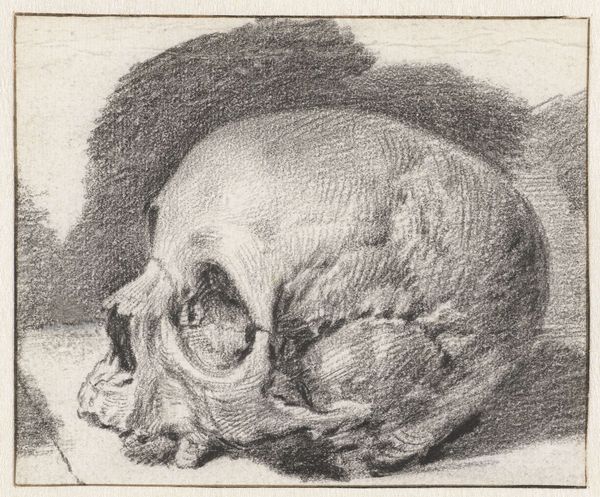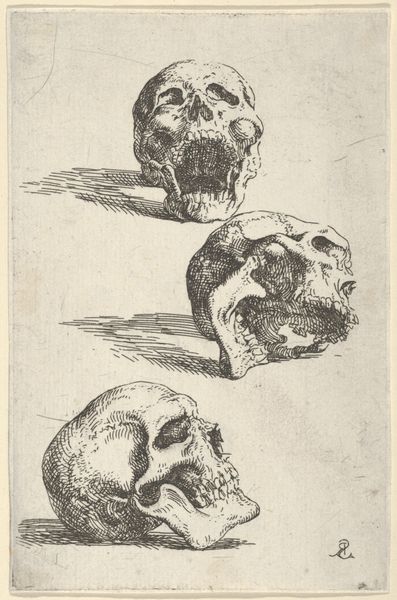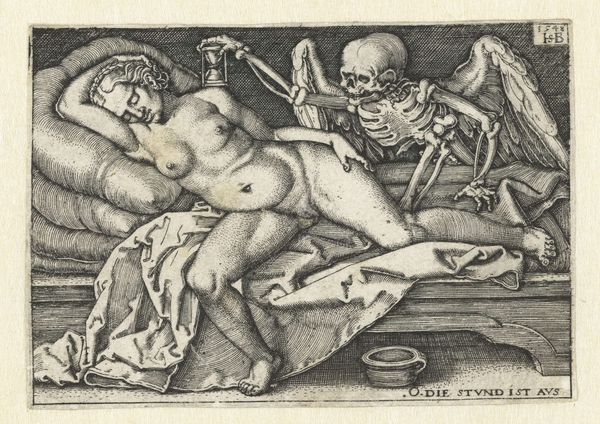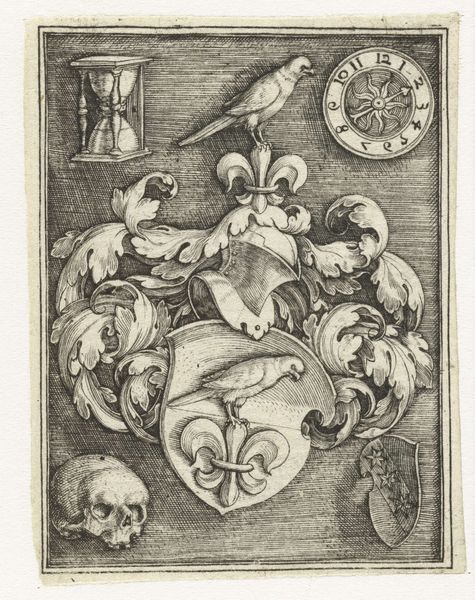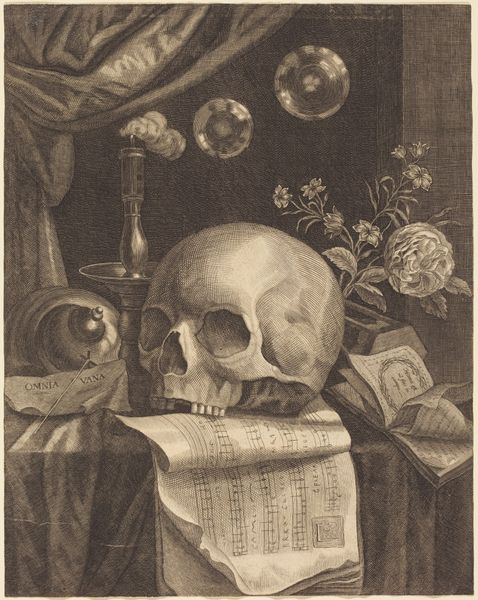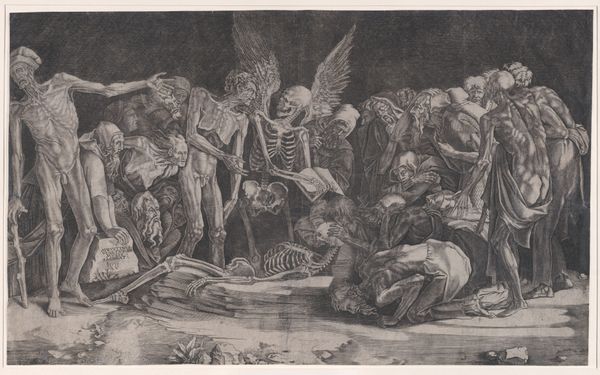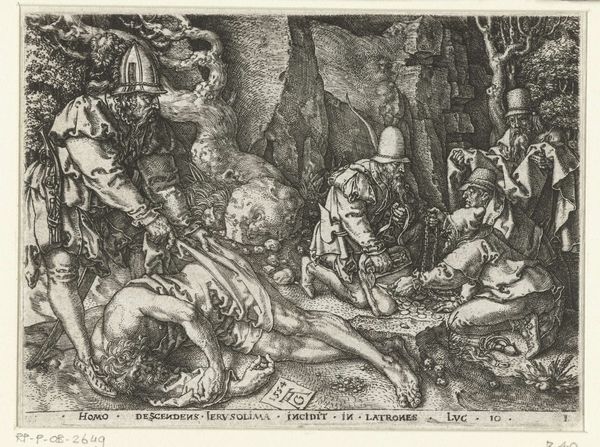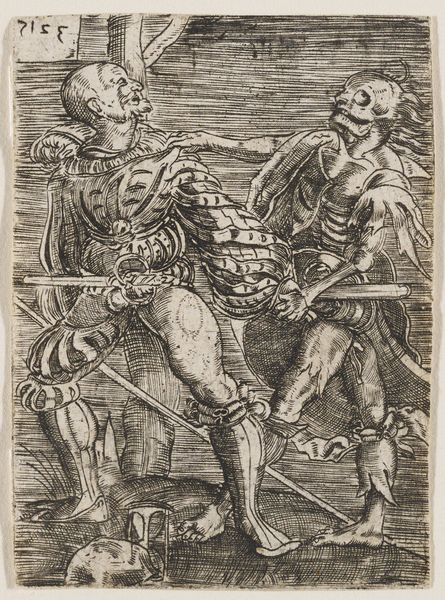
#
pencil drawn
#
toned paper
#
light pencil work
#
pen sketch
#
pencil sketch
#
pencil drawing
#
pen-ink sketch
#
pen work
#
pencil work
#
pencil art
Dimensions: height 40 mm, width 57 mm
Copyright: Rijks Museum: Open Domain
Curator: Here we have “Kind met drie schedels,” or “Child with Three Skulls.” Created sometime between 1529 and 1590 by an anonymous artist, it's a fascinating example of a drawing rendered in pencil and ink on toned paper. Editor: My first impression is of melancholy. It’s unsettling to see that contrast between youth, symbolized by the child, and mortality, emphasized by the skulls and that hourglass in the background, reminding us of fleeting time. Curator: Exactly. The work presents the child figure juxtaposed with death itself. The gaze is heavy. You can almost imagine a commentary on power structures of the time where life, even at its most precious and vulnerable, is so heavily burdened. Editor: And there’s the texture of it all. The different weights of line used create incredible depth despite the medium’s inherent limitations. Look at how the bones seem scattered; almost as though one swept all this material together, with varying grades of quality suggesting layers upon layers of production and labor…even the preparation of the paper. Curator: You are spot on to consider the materiality. The starkness emphasizes a certain fatalism that was so ever present in considerations of faith and philosophy during that time. One is left wondering, what expectations, what burdens did people place on childhood? This is complicated, isn't it? Editor: It really is. And the composition pulls you in as the details slowly come into focus. What appeared chaotic suddenly has purpose, as the pen and pencil strokes have brought these images into life with precision, which brings the material reality into stark relief against the metaphor of the images of death and innocence. Curator: Reflecting on “Kind met drie schedels” truly pushes us to consider how artists were, and continue to be, commenting on identity through materials readily available to them while simultaneously commenting on the temporal. Editor: It prompts a deep consideration of art production, materiality, and how those informed the final artwork in its time and continuing legacy. An anonymous artist, reminding us perhaps of how the individual and its labor matters when stacked up against a collective cultural legacy.
Comments
No comments
Be the first to comment and join the conversation on the ultimate creative platform.
